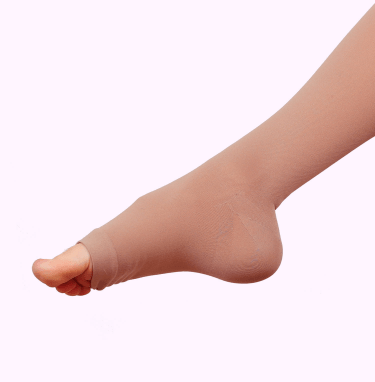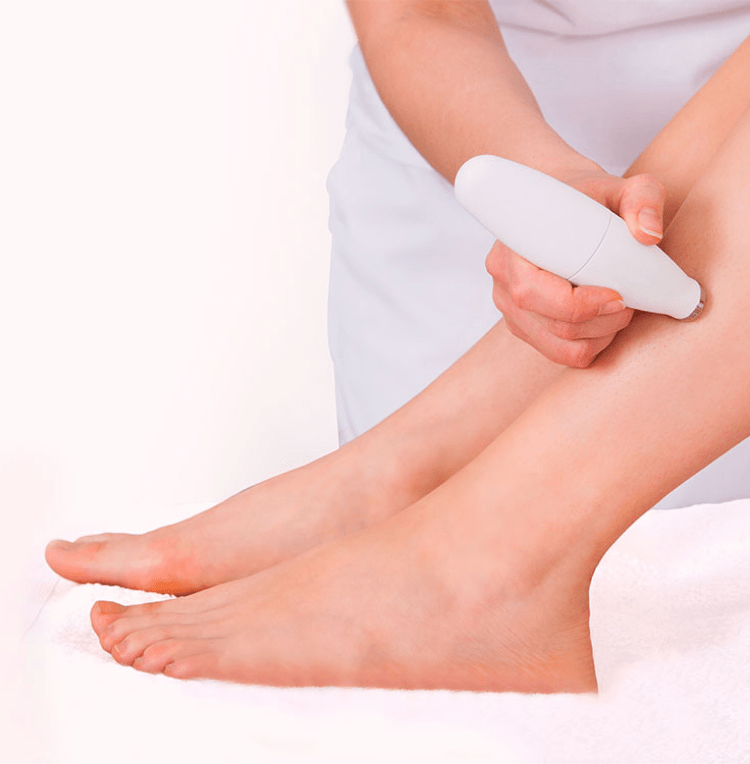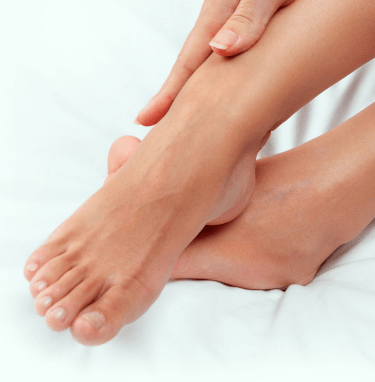Spider Vein Treatment Overview
How Are Spider Veins Defined?
Spider veins are small, dilated veins just beneath the skin that are red, purple or blue. They’re aptly named for their spindly, branching quality, resembling spider legs, and their tendency to congregate in clusters like a spider web. They’re neither healthy, nor efficient at performing circulatory duties. They aren’t usually dangerous, but the condition behind them can be. Some patients’ spider veins are just a cosmetic nuisance. But many patients’ spider veins are linked to chronic venous insufficiency, which warrants a visit to our vein clinic in New York.
What Typically Causes Spider Veins?
While several things cause spider veins, including sun damage, hormones, and weight gain, spider veins on the legs are typically caused by venous insufficiency. Veins have valves that act as one-way flaps, sending blood in a singular direction, toward the heart. But if a valve malfunctions, blood in the leg veins leaks down toward your feet. Over time, blood accumulates below the broken valve, which dilates the vein. Spider veins begin spreading out in various directions from that centralized pressure point in your vein. What causes valve malfunction and intravenous pressure? Several factors like aging, obesity, pregnancy, inactivity, and a genetic predisposition are involved. Females are highly susceptible to these veins known as telangiectasias, which might cause symptoms like itching, pain, restlessness, swelling, and heavy legs, or might have no symptoms at all. Our vein clinics in New York offer corrective, therapeutic, and preventative measures to minimize spider veins.
Who Develops Spider Veins?
Genetics are often to blame for telangiectasias. Children can get spider veins, especially the types that occur on the face with conditions like rosacea or port wine stains. But spider veins in the legs are primarily found in adults, particularly those over 30 years of age. When progesterone and estrogen levels spike (as with pregnancy, infertility treatments, menopause, hormone replacement therapy, and birth control pills), vein walls become weaker, leading to enlarged veins. This dilation often prompts spider veins, which means over half of women have them. Both genders are prone to spider veins if they have a history of vascular disease or if they work in settings that require them to remain seated or standing for multiple hours at a time.
Which Spider Vein Symptoms Require a New York Vein Clinic Visit?
Patients without symptoms often visit vein clinics in New York to erase their spider veins because they negatively affect their skin’s appearance. Others visit our vein doctors in NY state because they’re exhausted by symptoms like heavy legs, burning or stinging, hyperpigmentation, pruritus, edema, cramps, and throbbing. Those with substantial venous insufficiency might have serious complications like slow-healing or infected ulcerations.
Why Do You Have Spider Veins?
If you notice spider veins spreading across your legs, you might have the common disease called chronic venous insufficiency. A singular spider vein at a location that sustained external trauma might be a broken superficial blood vessel. But several defective thread veins signify possible valve failure in a deeper vein. If you fit into the risk categories described above, vein disease should be considered before simply treating spider veins cosmetically at a vein clinic in NY state.
How Does a Vein Clinic in New York Treat Spider Veins?
For some patients, treatment isn’t medically necessary, but it’s used to restore flawless skin on their legs. Sclerotherapy is one such aesthetic solution. But if your spider veins are painful, bleeding, or symptomatic, our vein clinics in New York also investigate for signs of vein disease. Our cutting-edge, minimally invasive techniques treat the symptoms and appearance of telangiectasias. Discover your options below.
Which Spider Vein Clinic Treatment is Best for You?
If you’re eager to erase your spider veins but uneasy about the process, rest assured that spider vein treatment is safe, fast, and effective, providing your veins are evaluated first. Some vein clinics in New York simply inject or laser-treat veins without an evaluation. In those cases, spider veins might reappear due to unresolved valve malfunction. Our vein specialists in New York provide comprehensive treatment for superficial and deeper vein issues.
Sclerotherapy injections:
These injections of liquid, foam, or premixed foam medication are gentle and easy, and performed in under 30 minutes at our vein clinic in New York. A medical irritant enters and collapses the troubled vein to restore healthy circulation. It’s considered a first line of treatment for spider veins, and it’s the one our vein doctors in New York recommend most frequently.

Endоvеnоuѕ
Lаѕеr Ablation:
Often called EVLA or EVLT, this treatment has the same concept as radiofrequency ablation, but lasers produce the thermal energy, rather than soundwaves. Like RF ablation, endovenous lasers target the venous insufficiency that causes spider veins, not just the visibility of them at the skin’s surface. Endovenous lasers also require only local anesthetics, and are safer and less invasive than surgical vein stripping.

Endovenous Radiofrequency Ablation:
This procedure heats the vein walls to scar spider veins shut, keeping blood out of the errant pathway. Vein doctors utilize soundwaves to intentionally cauterize the vein. RFA isn’t as hot as laser ablation, so it works well with less discomfort. Radiofrequency treatments also bruise less after the procedure than other types of ablation.

Laser Skin
Therapy:
Aimed solely at spider veins’ appearance, laser therapy on the skin shrinks and lightens the tiniest spider veins. It might be paired with sclerotherapy or used as an alternative for cosmetic resolution of telangiectasias. It won’t treat vein diseases or vein symptoms and isn’t an option for patients with certain types of skin.

Compression or
Support Stockings:
Wearing compression stockings helps some patients with spider vein symptoms like swelling, since the external pressure assists leg veins in pumping blood up, rather than accumulating it. In addition, some insurance plans require you to try compression stockings before they’ll approve coverage for vein treatments like endovenous ablation. However, compression doesn’t erase spider veins or treat vein diseases like venous insufficiency. Visit our vein clinics in New York to find the right stocking size, without which, they’ll be ineffective.
Exercising Daily:
You already know that exercise is good for your heart. But it’s good for your veins too. Each time a leg muscle is flexed, it helps drive blood up and out of the vein. Sitting a lot isn’t good for veins, but neither is consistently standing, since that exerts pressure on veins. That’s why restaurant workers, teachers, and healthcare workers are prone to venous insufficiency, even if their heart is healthy. Practice daily activity and positional changes if your job is stationary. More movement means less symptoms, although it won’t make current spider veins vanish. After a long day, prop your feet up higher than your chest to prevent pooling in your veins.